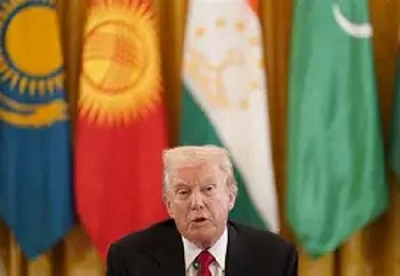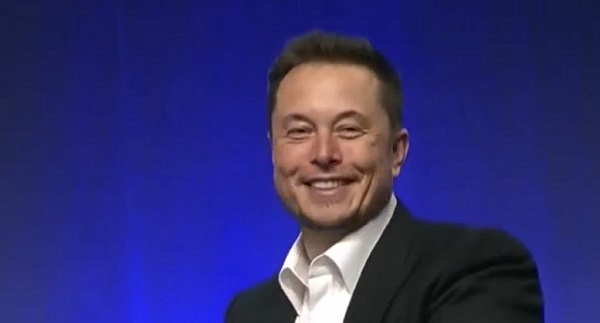Brownstone Institute
These Amendments Would Open the Door to a Dangerous Global Health Bureaucracy

From the Brownstone Institute
BY
One of the most extraordinary and disturbing aspects of the proposed amendments to IHR is the removal of an important clause requiring that the implementation of the regulations be “with full respect for the dignity, human rights and fundamental freedoms of persons.”
In its place, the new clause reads that the implementation of the regulations shall be “based on the principles of equity, inclusivity, coherence and in accordance with their (the?) common but differentiated responsibilities of the States Parties, taking into consideration their social and economic development.” It is hard to know how any sane and responsible adult could justify removing “dignity, human rights, and fundamental freedoms” from International Health Regulations.
The Covid pandemic gave the World Health Organization and its partners unprecedented visibility and a tremendous amount of “soft” power to shape public health law and policies across the world. Over the past year or so, the WHO has been pushing hard to consolidate and expand its power to declare and manage public health emergencies on a global scale.
The primary instruments for this consolidation are a WHO Pandemic Accord and a series of far-reaching amendments to existing International Health Regulations (IHR). The target date for finalizing both the IHR Amendments and the new Pandemic Accord is May 2024.
The net effect of the proposed text for the pandemic accord and the proposed amendments to the International Health Regulations, would be to create a legal and financial basis for the emergence of an elaborate, internationally coordinated bio-surveillance regime and significantly strengthen the authority of the World Health Organization to direct and coordinate the international response to global and regional public health threats.
It is not entirely clear why the WHO decided to negotiate a separate pandemic treaty that overlaps in significant ways with the proposed IHR amendments. In any case, most of the far-reaching changes to global health regulations are already contained within the IHR amendments, so that is what we will focus on here.
Even if the WHO failed to get a new pandemic treaty passed, the proposed amendments to International Health Regulations would be sufficient by themselves to confer unprecedented power on the WHO to direct international health and vaccination policies in circumstances deemed by the WHO to be a “public health emergency of international concern.”
The WHO wants the IHR amendments to be finalized on time for next year’s World Health Assembly, scheduled for 27 May – 1 June 2024. Assuming the amendments are approved by a simple majority of the delegates, they will be considered fully ratified 12 months after that, unless heads of State formally reject them within the designated opt-out period, which has been reduced from 18 to 10 months.
If ratified, they will come into effect two years after their announcement at the May 2024 World Health Assembly (i.e., around June 2026), as stipulated in the annex to Amendments to the International Health Regulations (2005) agreed to on 28th May 2022.
In other words, revisions to the International Health Regulations will pass by default rather than by formal acceptance by heads of State. The silence of heads of State will be construed as consent. This makes it all the easier for the revised IHR to pass without proper legislative scrutiny and without a public debate in the States that are subject to the new legal framework.
To get a flavour of how these changes in international law are likely to impact the policies of governments and citizens’ lives more broadly, it is sufficient to review a selection of the proposed amendments. While we do not know which of the amendments will survive the negotiation process, the direction of travel is alarming.
Taken together, these amendments to International Health Regulations would push us in the direction of a global public health bureaucracy with limited democratic accountability, glaring conflicts of interest, and significant potential for systematic harm to the health and liberties of citizens.
The amendments discussed below are drawn from a 46-page document hosted on the WHO webpage entitled “Article-by-Article Compilation of Proposed Amendments to the International Health Regulations (2005) submitted in accordance with decision WHA75(9) (2022).” Because these changes are being negotiated largely outside the frame of national electoral politics, the average citizens is barely aware of them.
Should these amendments come into force, States will be bound by international law, in the event of a public health emergency (as defined by WHO) to follow the playbook of health policies determined by the WHO and its “emergency committee” of “experts,” leaving far less scope for national parliaments and governments to set policies that diverge from WHO recommendations.
Insofar as national States formally consent to the IHR amendments, their sovereignty would remain intact, from a legal perspective. But insofar as they are binding themselves to dance to the tune of political actors outside the scope of national politics, they would clearly lose their freedom to set their own policies in this domain, and health policy “gurus,” instead of representing their fellow citizens, would represent a global health regime transcending national politics and operating above national law.
Under a globally coordinated public health regime, activated by an international public health emergency declared by the WHO, citizens would be vulnerable to errors committed by WHO-nominated “experts” sitting in Geneva or New York, errors which could replicate themselves through a global health system with little resistance from national governments.
Citizens have a right to know that the amended regulations as they stand would give unprecedented power to a WHO-led global health regime and, by implication, its most influential financial and political stakeholders like the World Economic Forum, the World Bank, and the Bill & Melinda Gates Foundation, all of which are largely beyond the reach of national voters and legislators.
There are dozens of proposed amendments to the 2005 International Health Regulations. Here, I will highlight eight changes that are of special concern because of their implications for the independence of national health regimes and for the rights of citizens:
States Bind Themselves to Follow WHO’s Advice as “The Guidance and Coordinating Authority” During an International Public Health Emergency
One of the amendments to IHR (International Health Regulations) reads, “States Parties recognize WHO as the guidance and coordinating authority of international public health response during public health Emergency of International Concern and undertake to follow WHO’s recommendations in their international public health responses.” Like many other treaty “undertakings,” the means for other parties to IHR to enforce this “undertaking” are limited.
Nevertheless, States party to the new regulations would be legally binding themselves to adhere to WHO recommendations and may lose credibility or suffer politically for failing to follow through on their international treaty commitments. This may seem “toothless” to some, but the reality is that this sort of “soft power” is what drives a good deal of compliance with international law.
Removal of “Non-Binding” Language
In the previous version of Article 1, WHO “recommendations” were defined as “non-binding advice.” In the new version, they are defined simply as “advice.” The only reasonable interpretation of this change is that the author wished to remove the impression that States were at liberty to disregard WHO recommendations. Insofar as signatories do “undertake to follow WHO’s recommendations in their international public health responses,” it would indeed appear that such “advice” becomes legally “binding” under the new regulations, making it legally difficult for States to dissent from WHO recommendations.
Removal of Reference to “Dignity, Human Rights and Fundamental Freedoms”
One of the most extraordinary and disturbing aspects of the proposed amendments to IHR is the removal of an important clause requiring that the implementation of the regulations be “with full respect for the dignity, human rights and fundamental freedoms of persons.”
In its place, the new clause reads that the implementation of the regulations shall be “based on the principles of equity, inclusivity, coherence and in accordance with their (the?) common but differentiated responsibilities of the States Parties, taking into consideration their social and economic development.” It is hard to know how any sane and responsible adult could justify removing “dignity, human rights, and fundamental freedoms” from International Health Regulations.
Expansion of Scope of International Health Regulations
In the revised version of Article 2, the scope of IHR includes not only public health risks, but “all risks with a potential to impact public health.” Under this amendment, International Health Regulations, and their main coordinating body, the WHO, would be concerned not only with public health risks, but with every conceivable societal risk that might “impact” public health. Workplace stress? Vaccine hesitancy? Disinformation? Misinformation? Availability of pharmaceutical products? Low GDP? The basis for WHO intervention and guidance could be expanded indefinitely.
Consolidation of a Global Health Bureaucracy
Each State should nominate a “National IHR Focal Point” for “the implementation of health measures under these regulations.” These “focal points” could avail of WHO “capacity building” and “technical assistance.” IHR Focal Points, presumably manned by unelected bureaucrats and “experts,” would be essentially nodes in a new WHO-led global health bureaucracy.
Other important aspects of this new global health bureaucracy would be the WHO’s role in developing global “allocation plans for health products” (including vaccines), the WHO’s role as an information hub for expanded disease surveillance and research units across the world, and the WHO’s role as a a lead player in an international network of actors devoted to combatting “false and unreliable information” about public health events and anti-epidemic measures.
Expansion of WHO Emergency Powers
Under the revised regulations, the Director-General of the World Health Organization, “based on the opinion/advice of the Emergency Committee,” may designate an event as “having the potential to develop into a public health emergency of international concern, (and) communicate this and the recommended measures to State parties…” The introduction of the concept of a “potential” public health emergency, along with the idea of an “intermediate” emergency, also to be found among the proposed amendments, gives the WHO much wider leeway to set in motion emergency protocols and recommendations. For who knows what a “potential” or “intermediate” emergency amounts to?
Entrenchment and Legitimation of an International Bio-Surveillance Regime
The old Article 23, “Health Measures on arrival and departure,” authorizes States to require that travellers produce certain medical credentials prior to travel, including “a non-invasive medical examination which is the least intrusive examination that could achieve the public health objective.” In the new version of Article 23, travellers may be required to produce “documents containing information…on a laboratory test for a pathogen and/or information on vaccination against a disease.”
These documents may include WHO-validated digital health certificates. Essentially, this reaffirms and legally validates the vaccine passport regime that imposed prohibitive testing costs on unvaccinated citizens in 2021-23, and resulted in thousands and probably tens of thousands of people vaccinating just for the convenience of travelling, rather than based on health considerations.
Global Initiatives for Combating “False and Unreliable Information”
Both WHO and States bound by IHR, under the revised draft of IHR, “shall collaborate” in “countering the dissemination of false and unreliable information about public health events, preventive and anti-epidemic measures and activities in the media, social networks, and other ways of disseminating such information.” Clearly the misinformation/disinformation amendments entail a propaganda and censorship regime.
There is no other plausible way to interpret “countering the dissemination of false and unreliable information,” and this is exactly how anti-disinformation measures have been interpreted since the Covid pandemic was announced in 2020 – measures, it may be added, that suppressed sound scientific contributions concerning vaccine risks, lab origins of the novel coronavirus, and efficacy of community masking.
The joint effect of these and other proposed changes to International Health Regulations would be to enthrone the WHO and its director-general at the head of an elaborate global health bureaucracy beholden to the special interests of WHO patrons, a bureaucracy that would be operated largely with the cooperation of State officials and agencies implementing “advice” and “recommendations” issued by the WHO, which State parties have legally undertaken to follow.
While it is true that international treaties cannot be coercively enforced, this does not mean that international law is inconsequential. Under the newly amended regulations, a highly centralized public health bureaucracy would be propped up by lavish funding mechanisms and protected by international law. A bureaucracy of this sort would inevitably become entrenched and intertwined with national bureaucracies, and would become an important element of the policymaking architecture of pandemic planning and responses.
Though national States could, theoretically, bypass this bureaucracy and renege on their legal undertakings under IHR, taking a different path to that recommended by WHO, this would be rather strange, given that they themselves would have both approved and financed the regime they are boycotting.
In the face of opposition from one or more signatory States, the WHO and its partners could pressure such a State into complying with its edicts by shaming it into upholding its legal commitments, or else other States may reprimand “renegade” states for putting international health in jeopardy, and apply political, financial and diplomatic pressure to secure compliance. Thus, while IHR would operate upon State officials in a softer way than national, police-backed regulations, it would certainly not be powerless or politically inconsequential.
The impact of the new global health bureaucracy on the lives of ordinary citizens may be quite dramatic: it would erect a global censorship regime legitimated by international law, making challenges to officially sanctioned information harder than ever; and it would make international public health responses even more slavishly dependent on WHO directives than they were before, discouraging independent, dissenting responses such as that of Sweden during the Covid pandemic.
Last but not least, the new global health bureaucracy would put the fate of ordinary citizens – our national and international mobility, our right to informed consent to medication, our bodily integrity, and ultimately, our health – in the hands of public health officials acting in lockstep with WHO “recommendations.”
Apart from the fact that policy diversification and experimentation is essential to a robust healthcare system, and is crushed by a highly centralized response to health emergencies, the WHO is already riddled with internal conflicts of interest and a track record of catastrophically unsound judgments, making them singularly unqualified to reliably identify a global health emergency or coordinate the response to it.
To start with, the WHO’s income stream depends on individuals like Bill Gates who have significant financial stakes in the pharmaceutical industry. How can we possibly expect the WHO to make impartial, disinterested recommendations about, say, the safety and efficacy of vaccines, when its own donors are financially invested in the success of specific pharmaceutical products, including vaccines?
Secondly, to allow the WHO to declare an international public health emergency is to create an obvious perverse incentive: given that a large part of the raison d’être of a WHO-led global health bureaucracy is to prevent, monitor, and respond to public health emergencies, and the activation of the WHO’s emergency powers depends on the presence of an actual or potential “public health emergency of international concern,” the WHO’s Director-General has an obvious professional and institutional interest in declaring potential or actual public health emergencies.
Third, the WHO wasted no time in praising China’s brutal and ultimately unsuccessful lockdowns, continues to support the censorship of their critics, repeatedly recommended community masking in the absence of plausible evidence of efficacy, failed to warn the public in a timely manner about the serious risks of mRNA vaccines, and has entered into a partnership with the European Union to extend the discriminatory and coercive Covid vaccine certificate system globally. These are certainly not people I would trust as custodians of my bodily integrity, health, informed consent, or mobility.
Republished from the author’s Substack
Brownstone Institute
Bizarre Decisions about Nicotine Pouches Lead to the Wrong Products on Shelves

From the Brownstone Institute
A walk through a dozen convenience stores in Montgomery County, Pennsylvania, says a lot about how US nicotine policy actually works. Only about one in eight nicotine-pouch products for sale is legal. The rest are unauthorized—but they’re not all the same. Some are brightly branded, with uncertain ingredients, not approved by any Western regulator, and clearly aimed at impulse buyers. Others—like Sweden’s NOAT—are the opposite: muted, well-made, adult-oriented, and already approved for sale in Europe.
Yet in the United States, NOAT has been told to stop selling. In September 2025, the Food and Drug Administration (FDA) issued the company a warning letter for offering nicotine pouches without marketing authorization. That might make sense if the products were dangerous, but they appear to be among the safest on the market: mild flavors, low nicotine levels, and recyclable paper packaging. In Europe, regulators consider them acceptable. In America, they’re banned. The decision looks, at best, strange—and possibly arbitrary.
What the Market Shows
My October 2025 audit was straightforward. I visited twelve stores and recorded every distinct pouch product visible for sale at the counter. If the item matched one of the twenty ZYN products that the FDA authorized in January, it was counted as legal. Everything else was counted as illegal.
Two of the stores told me they had recently received FDA letters and had already removed most illegal stock. The other ten stores were still dominated by unauthorized products—more than 93 percent of what was on display. Across all twelve locations, about 12 percent of products were legal ZYN, and about 88 percent were not.
The illegal share wasn’t uniform. Many of the unauthorized products were clearly high-nicotine imports with flashy names like Loop, Velo, and Zimo. These products may be fine, but some are probably high in contaminants, and a few often with very high nicotine levels. Others were subdued, plainly meant for adult users. NOAT was a good example of that second group: simple packaging, oat-based filler, restrained flavoring, and branding that makes no effort to look “cool.” It’s the kind of product any regulator serious about harm reduction would welcome.
Enforcement Works
To the FDA’s credit, enforcement does make a difference. The two stores that received official letters quickly pulled their illegal stock. That mirrors the agency’s broader efforts this year: new import alerts to detain unauthorized tobacco products at the border (see also Import Alert 98-06), and hundreds of warning letters to retailers, importers, and distributors.
But effective enforcement can’t solve a supply problem. The list of legal nicotine-pouch products is still extremely short—only a narrow range of ZYN items. Adults who want more variety, or stores that want to meet that demand, inevitably turn to gray-market suppliers. The more limited the legal catalog, the more the illegal market thrives.
Why the NOAT Decision Appears Bizarre
The FDA’s own actions make the situation hard to explain. In January 2025, it authorized twenty ZYN products after finding that they contained far fewer harmful chemicals than cigarettes and could help adult smokers switch. That was progress. But nine months later, the FDA has approved nothing else—while sending a warning letter to NOAT, arguably the least youth-oriented pouch line in the world.
The outcome is bad for legal sellers and public health. ZYN is legal; a handful of clearly risky, high-nicotine imports continue to circulate; and a mild, adult-market brand that meets European safety and labeling rules is banned. Officially, NOAT’s problem is procedural—it lacks a marketing order. But in practical terms, the FDA is punishing the very design choices it claims to value: simplicity, low appeal to minors, and clean ingredients.
This approach also ignores the differences in actual risk. Studies consistently show that nicotine pouches have far fewer toxins than cigarettes and far less variability than many vapes. The biggest pouch concerns are uneven nicotine levels and occasional traces of tobacco-specific nitrosamines, depending on manufacturing quality. The serious contamination issues—heavy metals and inconsistent dosage—belong mostly to disposable vapes, particularly the flood of unregulated imports from China. Treating all “unauthorized” products as equally bad blurs those distinctions and undermines proportional enforcement.
A Better Balance: Enforce Upstream, Widen the Legal Path
My small Montgomery County survey suggests a simple formula for improvement.
First, keep enforcement targeted and focused on suppliers, not just clerks. Warning letters clearly change behavior at the store level, but the biggest impact will come from auditing distributors and importers, and stopping bad shipments before they reach retail shelves.
Second, make compliance easy. A single-page list of authorized nicotine-pouch products—currently the twenty approved ZYN items—should be posted in every store and attached to distributor invoices. Point-of-sale systems can block barcodes for anything not on the list, and retailers could affirm, once a year, that they stock only approved items.
Third, widen the legal lane. The FDA launched a pilot program in September 2025 to speed review of new pouch applications. That program should spell out exactly what evidence is needed—chemical data, toxicology, nicotine release rates, and behavioral studies—and make timely decisions. If products like NOAT meet those standards, they should be authorized quickly. Legal competition among adult-oriented brands will crowd out the sketchy imports far faster than enforcement alone.
The Bottom Line
Enforcement matters, and the data show it works—where it happens. But the legal market is too narrow to protect consumers or encourage innovation. The current regime leaves a few ZYN products as lonely legal islands in a sea of gray-market pouches that range from sensible to reckless.
The FDA’s treatment of NOAT stands out as a case study in inconsistency: a quiet, adult-focused brand approved in Europe yet effectively banned in the US, while flashier and riskier options continue to slip through. That’s not a public-health victory; it’s a missed opportunity.
If the goal is to help adult smokers move to lower-risk products while keeping youth use low, the path forward is clear: enforce smartly, make compliance easy, and give good products a fair shot. Right now, we’re doing the first part well—but failing at the second and third. It’s time to fix that.
Addictions
The War on Commonsense Nicotine Regulation

From the Brownstone Institute
Cigarettes kill nearly half a million Americans each year. Everyone knows it, including the Food and Drug Administration. Yet while the most lethal nicotine product remains on sale in every gas station, the FDA continues to block or delay far safer alternatives.
Nicotine pouches—small, smokeless packets tucked under the lip—deliver nicotine without burning tobacco. They eliminate the tar, carbon monoxide, and carcinogens that make cigarettes so deadly. The logic of harm reduction couldn’t be clearer: if smokers can get nicotine without smoke, millions of lives could be saved.
Sweden has already proven the point. Through widespread use of snus and nicotine pouches, the country has cut daily smoking to about 5 percent, the lowest rate in Europe. Lung-cancer deaths are less than half the continental average. This “Swedish Experience” shows that when adults are given safer options, they switch voluntarily—no prohibition required.
In the United States, however, the FDA’s tobacco division has turned this logic on its head. Since Congress gave it sweeping authority in 2009, the agency has demanded that every new product undergo a Premarket Tobacco Product Application, or PMTA, proving it is “appropriate for the protection of public health.” That sounds reasonable until you see how the process works.
Manufacturers must spend millions on speculative modeling about how their products might affect every segment of society—smokers, nonsmokers, youth, and future generations—before they can even reach the market. Unsurprisingly, almost all PMTAs have been denied or shelved. Reduced-risk products sit in limbo while Marlboros and Newports remain untouched.
Only this January did the agency relent slightly, authorizing 20 ZYN nicotine-pouch products made by Swedish Match, now owned by Philip Morris. The FDA admitted the obvious: “The data show that these specific products are appropriate for the protection of public health.” The toxic-chemical levels were far lower than in cigarettes, and adult smokers were more likely to switch than teens were to start.
The decision should have been a turning point. Instead, it exposed the double standard. Other pouch makers—especially smaller firms from Sweden and the US, such as NOAT—remain locked out of the legal market even when their products meet the same technical standards.
The FDA’s inaction has created a black market dominated by unregulated imports, many from China. According to my own research, roughly 85 percent of pouches now sold in convenience stores are technically illegal.
The agency claims that this heavy-handed approach protects kids. But youth pouch use in the US remains very low—about 1.5 percent of high-school students according to the latest National Youth Tobacco Survey—while nearly 30 million American adults still smoke. Denying safer products to millions of addicted adults because a tiny fraction of teens might experiment is the opposite of public-health logic.
There’s a better path. The FDA should base its decisions on science, not fear. If a product dramatically reduces exposure to harmful chemicals, meets strict packaging and marketing standards, and enforces Tobacco 21 age verification, it should be allowed on the market. Population-level effects can be monitored afterward through real-world data on switching and youth use. That’s how drug and vaccine regulation already works.
Sweden’s evidence shows the results of a pragmatic approach: a near-smoke-free society achieved through consumer choice, not coercion. The FDA’s own approval of ZYN proves that such products can meet its legal standard for protecting public health. The next step is consistency—apply the same rules to everyone.
Combustion, not nicotine, is the killer. Until the FDA acts on that simple truth, it will keep protecting the cigarette industry it was supposed to regulate.
-

 Business2 days ago
Business2 days agoCarney budget doubles down on Trudeau-era policies
-

 COVID-192 days ago
COVID-192 days agoCrown still working to put Lich and Barber in jail
-

 Business1 day ago
Business1 day agoCarney’s Deficit Numbers Deserve Scrutiny After Trudeau’s Forecasting Failures
-

 Business2 days ago
Business2 days agoCarney budget continues misguided ‘Build Canada Homes’ approach
-

 International1 day ago
International1 day agoKazakhstan joins Abraham Accords, Trump says more nations lining up for peace
-

 armed forces23 hours ago
armed forces23 hours agoIt’s time for Canada to remember, the heroes of Kapyong
-

 Automotive1 day ago
Automotive1 day agoElon Musk Poised To Become World’s First Trillionaire After Shareholder Vote
-

 Energy1 day ago
Energy1 day agoCanada Cannot Become an Energy Superpower With its Regulatory Impediments










